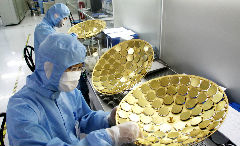Supply-side structural reform main task of China’s economic policy
2018-01-25
Xinhua
DAVOS — The principal contradiction in China’s economic development is the structural mismatch resulting from the supply side failing to evolve in step with the demand, a top Chinese official said Jan 24 at the World Economic Forum (WEF).
This aspect of China’s economic policy urgently needs to be fixed, said Liu He, a member of the Political Bureau of the Communist Party of China (CPC) Central Committee and director of the General Office of the Central Leading Group for Financial and Economic Affairs, in his speech at WEF.
The priority at the moment, he emphasized, is to cut excess capacity where necessary, reduce inventory in the housing sector, bring down the overall leverage ratio, lower cost across the board, and strengthen the weak links in the economy, ranging from public services to infrastructure and institutions.
“With these measures, we hope to make the supply side more adaptable and more innovative,” Liu said.
Liu further elaborated on some specific measures in recent years to address the main challenges. Since 2016, China has cut over 115 million tons of steel capacity, eliminated an additional 140 million tons of substandard steel capacity, and phased out over 500 million tons of coal capacity.
Though these market clearing measures has led to price rises in some sectors, the total factor productivity growth stopped its decline and began to increase in 2016, he said.
“The positive spillover of our supply-side structural reform is being felt across the world. Indeed, this is a reform that we must continue and see through,” he added.


